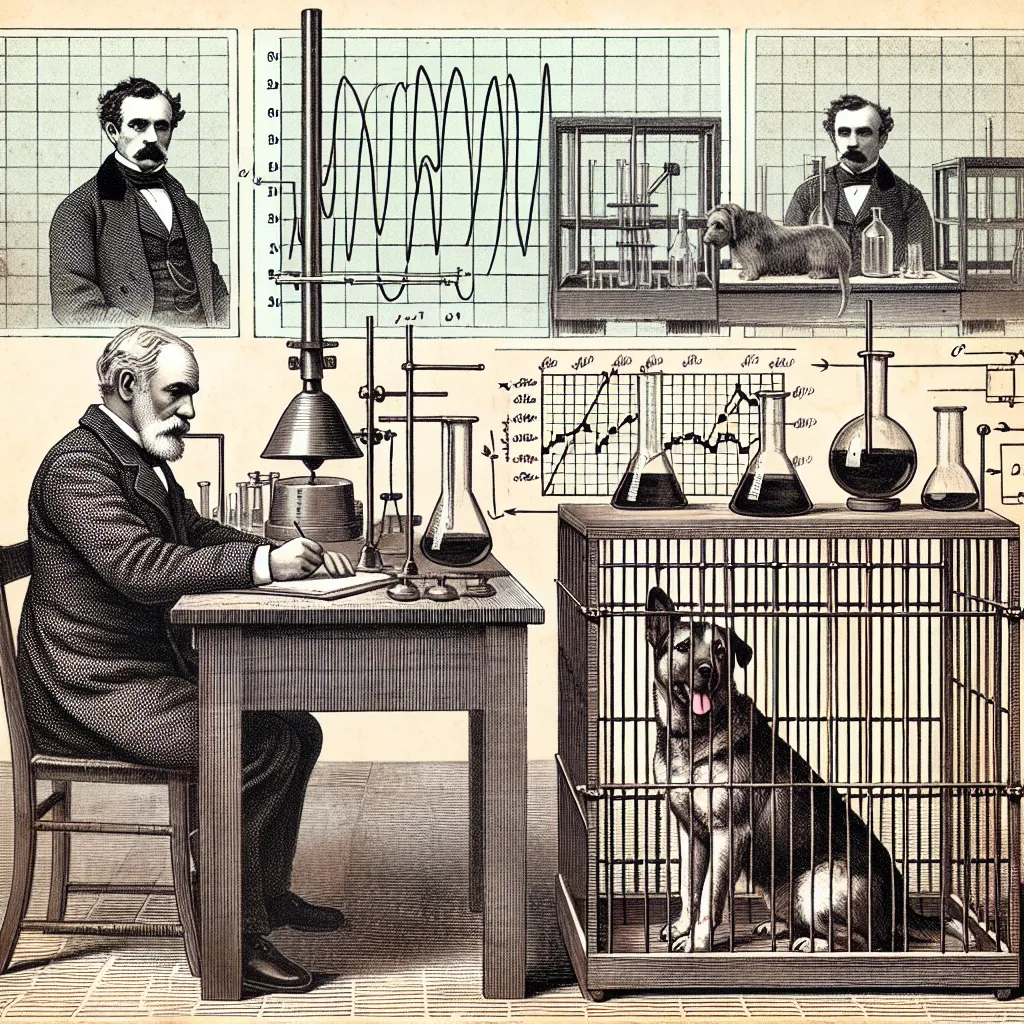Ivan Pavlov’s groundbreaking research in the early 20th century laid the foundation for our understanding of behavioral conditioning. His work, which began as a study of canine digestion, unexpectedly shed light on the psychological phenomena now known as classical conditioning. Pavlov’s experiments and observations have had an indelible impact on psychology, influencing educational approaches, therapeutic techniques, and the general comprehension of human and animal behavior.
The cornerstone of Pavlov’s influence lies in his most famous experiment where he observed the salivary responses of dogs. By consistently pairing the sound of a bell with the presentation of food, Pavlov demonstrated that the dogs would eventually begin to salivate at the sound of the bell alone, anticipating the food. This reaction is known as a conditioned response, with the bell becoming a conditioned stimulus. Before conditioning, the food was an unconditioned stimulus, as it naturally and unconditionally provoked the response of salivation, which is an unconditioned response.
This simple yet profound experiment has rippled through decades, shaping the study of behavior. The principle of classical conditioning has been applied to various fields, including psychology, education, animal training, and neuroscience. Understanding classical conditioning helps in grasping how certain patterns of behavior are learned and how they can be changed or extinguished.
In psychology, Pavlov’s legacy is most evident in behavior therapy. Techniques such as exposure therapy, which is used to treat phobias and anxiety disorders, are rooted in principles of classical conditioning. By repeatedly exposing a patient to the stimulus that causes anxiety without any negative outcomes, the conditioned response (fear or anxiety) can eventually be diminished or eliminated.
Education also benefits from Pavlov’s work. Teachers create positive learning environments that pair learning with positive stimuli to encourage students to develop a love for learning. This is seen in positive reinforcement strategies, where desirable behavior is rewarded, increasing the likelihood that the behavior will reoccur—a process akin to Pavlov’s conditioning.
In the realm of animal training, Pavlov’s influence is undeniable. Training regimes often revolve around the principles of conditioning, where animals are taught to respond to specific cues with desired behaviors. Dog training, for instance, frequently utilizes clicker training, which relies on the creation of a conditioned positive response to a click sound.
Pavlov’s work further opened doors to neuroscience, as his experiments showcased the physiological processes involved in learning and behavior. Subsequent research built on his findings, exploring the brain structures and neural pathways responsible for conditioned responses. From Pavlov’s research, we now understand that the brain’s amygdala and other associated structures play vital roles in processing conditioned emotional responses.
The applications of behavioral conditioning principles have also ventured into the realm of marketing and advertising. Advertisers often employ classical conditioning by associating products with positive emotions, music, or imagery, effectively creating a conditioned response in consumers. A memorable jingle or a heartwarming commercial can make a product more appealing, as it becomes subconsciously linked to those positive feelings—another testament to Pavlov’s extensive reach.
Moreover, Pavlov’s influence can be spotted in everyday life through the development of habits and routines. From morning rituals to workout regimens, the repeated association of cues and activities can help individuals form and maintain habitual behaviors. Understanding the theory behind these processes can enable a person to make changes to their behavior or create new, beneficial habits.
Behavioral conditioning also has implications for understanding societal behavior. The concepts of rewards and punishments, so central to Pavlov’s work, can be seen in the structuring of laws and social norms. Societal conditioning influences how individuals perceive right and wrong based on the consequences associated with certain actions.
However, beyond the merits and positive applications of Pavlov’s work, there have also been concerns and ethical considerations. Indeed, understanding behavioral conditioning opens up the possibility of manipulation and control, raising questions about free will and autonomy. Behavioral conditioning techniques can be, and sometimes have been, used in ways that challenge ethical boundaries, such as in coercive marketing or even brainwashing.
Furthermore, Pavlov’s influence prompts a revisit to the nature-versus-nurture debate. It suggests the power of environment over our genetic makeup in determining behavior. This has fundamental implications for developing policies in education, crime prevention, and social welfare, where an understanding of conditioned behavior can inform more effective interventions.
In education and parenting, the overreliance on rewards for motivating behavior has been scrutinized. Critics argue that this could lead to individuals expecting extrinsic rewards for all of their actions, potentially diminishing intrinsic motivation. The implications of Pavlovian conditioning have led many to advocate for a balanced approach when applying these principles to real-life scenarios.
As we delve into the 21st century, Pavlov’s influence remains as relevant as ever. Modern technological advancements like artificial intelligence and machine learning are drawing on principles of conditioning to develop algorithms that simulate learning and adaptation. The use of reinforcement learning—one of the approaches in machine learning—is a direct nod to the principles of behavioral conditioning established by Pavlov.
In conclusion, Pavlov’s contribution to the understanding of behavioral conditioning is a testament to the enduring nature of scientific discovery. From academics to practical applications, the ripple effects of his theories continue to influence many facets of society. As we seek to understand and shape behavior—be it in classrooms, therapy sessions, or beyond—it is clear that the principles laid out by Pavlov over a century ago will remain relevant, driving advancements and raising important conversations about the power and ethics of conditioning. Ivan Pavlov, through his meticulous experimentation and fascination with the mechanisms of the mind, has gifted humanity with a key to unraveling the complexities of behavior, making his work an everlasting cornerstone in the edifice of psychological science.



Leave a Comment